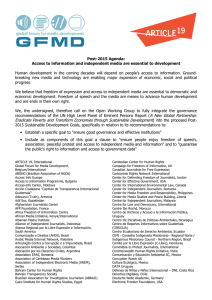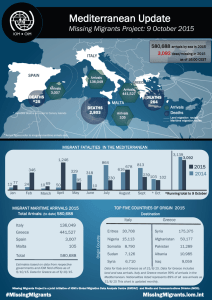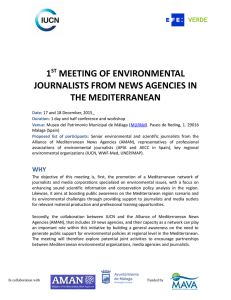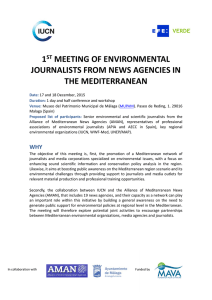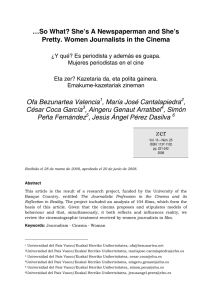Facts and Figures on Safety of Journalists Background:
Anuncio
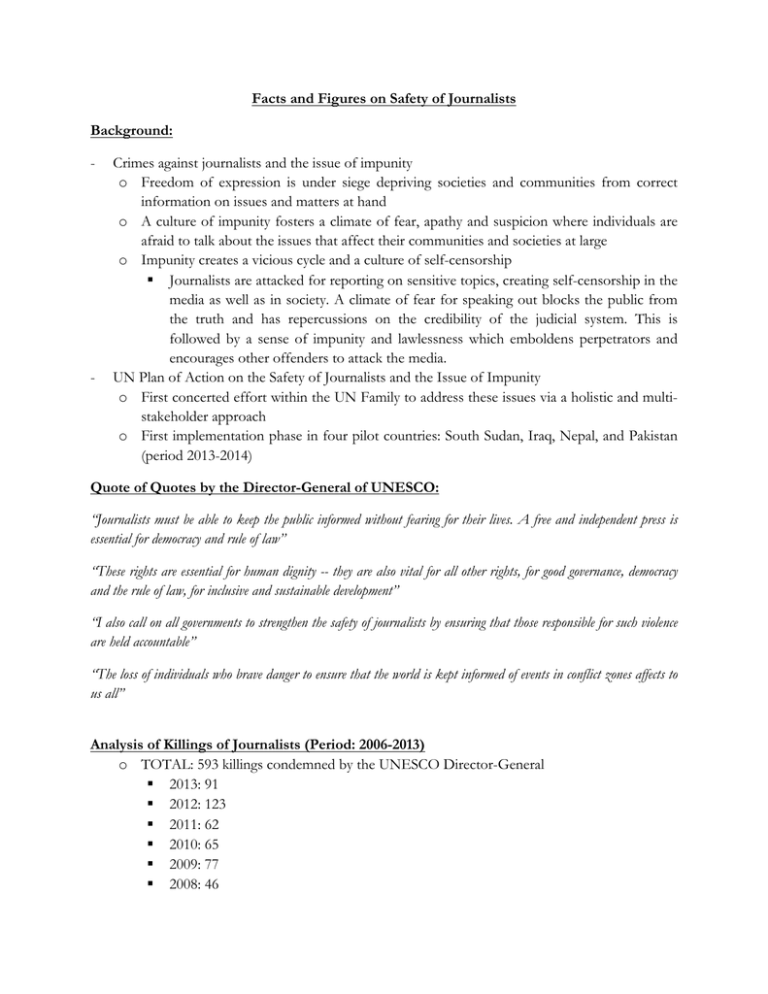
Facts and Figures on Safety of Journalists Background: - - Crimes against journalists and the issue of impunity o Freedom of expression is under siege depriving societies and communities from correct information on issues and matters at hand o A culture of impunity fosters a climate of fear, apathy and suspicion where individuals are afraid to talk about the issues that affect their communities and societies at large o Impunity creates a vicious cycle and a culture of self-censorship § Journalists are attacked for reporting on sensitive topics, creating self-censorship in the media as well as in society. A climate of fear for speaking out blocks the public from the truth and has repercussions on the credibility of the judicial system. This is followed by a sense of impunity and lawlessness which emboldens perpetrators and encourages other offenders to attack the media. UN Plan of Action on the Safety of Journalists and the Issue of Impunity o First concerted effort within the UN Family to address these issues via a holistic and multistakeholder approach o First implementation phase in four pilot countries: South Sudan, Iraq, Nepal, and Pakistan (period 2013-2014) Quote of Quotes by the Director-General of UNESCO: “Journalists must be able to keep the public informed without fearing for their lives. A free and independent press is essential for democracy and rule of law” “These rights are essential for human dignity -- they are also vital for all other rights, for good governance, democracy and the rule of law, for inclusive and sustainable development” “I also call on all governments to strengthen the safety of journalists by ensuring that those responsible for such violence are held accountable” “The loss of individuals who brave danger to ensure that the world is kept informed of events in conflict zones affects to us all” Analysis of Killings of Journalists (Period: 2006-2013) o TOTAL: 593 killings condemned by the UNESCO Director-General § 2013: 91 § 2012: 123 § 2011: 62 § 2010: 65 § 2009: 77 § 2008: 46 § § o o o o o o 2007: 59 2006: 70 ð On average 1 death per week ð 2012 is deadliest year with 123 killings ð 2013 second deadliest with 91 killings REGION § Arab States: 32% (190 deaths) § Asia and Pacific: 30% (179 deaths) § Latin America and the Caribbean: 21% (123 deaths) § Africa: 13% (76 deaths) § Europe and North America: 4% (25 deaths) LOCAL ó FOREIGN § Local journalists: 94% § Foreign correspondents: 6% SEX § Men: 94% § Women: 6% TYPE OF MEDIA § Print: 244 deaths (41%) § Television: 154 deaths (26%) § Radio: 123 deaths (21%) § Web: 41 deaths (7%) § Cross-platform1: 31 deaths (5%) IMPUNITY § Only 38 out of 593 cases are considered resolved (6.4%) => more than 9 out of 10 cases remain unsolved § 171 cases (28.8 %) are still ongoing in various stages of judicial inquiry § In Africa: 2 out 76 cases were resolved (2.6%) § In Arab States: 2 out of 190 cases were resolved (1%) § In Asia and the Pacific: 12 out of 179 cases were resolved (6.7%) § In Europe and North America: 10 out of 25 cases were resolved (40%) § In Latin America and the Caribbean: 12 out of 123 cases were resolved (9.8%) GLOBAL TREND FROM 2006-2013 § Europe and North America: overall decline § Asia and the Pacific: overall decline after the peak in 2009 § Arab States: sharp increase with a peak in 2012 § Latin America and the Caribbean: upward trend § Africa: constant until an increase in 2012 and 2013 Journalists who worked regularly across different media including Print/Web; Print/TV; Film; Radio/TV; Radio/Print; Radio/Web; TV/Radio; TV/Print. 1
